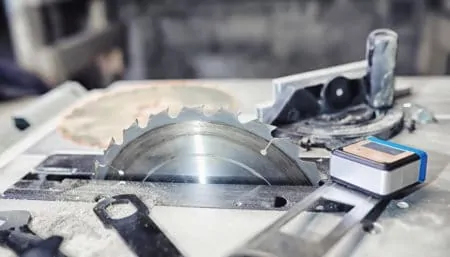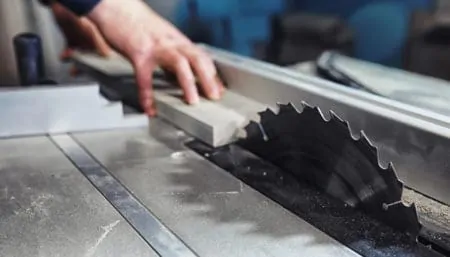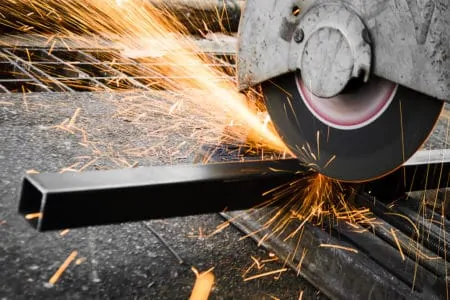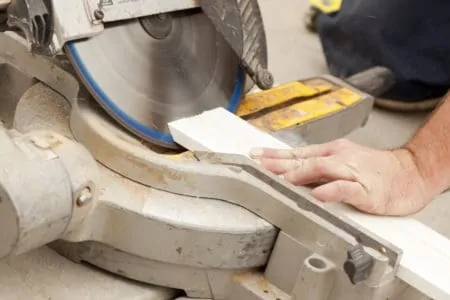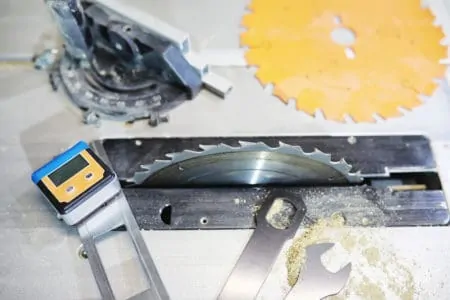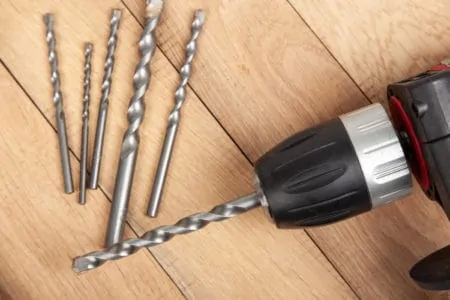Everybody’s at it. Everywhere you look, someone is doing it–online, next door, across the street. The nation is DIY obsessed, and the do-it-yourself statistics, facts, and trends back this up.
We decided to look at home improvement trends in more detail to bring you everything you need to know about DIY. Buckle up; it’s going to be a crazy ride!
Key Takeaways
- US DIY market worth $290 billion, set to grow 4.5% by 2027.
- Kitchen remodels are the most popular home improvement project.
- Home Depot and Lowes dominate US and global home improvement sales.
- Online sales of DIY products are increasing, but physical stores remain popular.
Top 10 DIY Facts and Trends
Here is a list of our top 10 stats about the domestic and global DIY market:
- The US DIY market is worth $290 billion, with a growth of 4.5 percent forecast by 2027.
- The kitchen is the most popular room to receive a remodel in American homes.
- Home Depot has an annual turnover of $121 billion, making it the fourth largest retailer in the USA.
- Baby boomers will account for 56 percent of all DIYers by 2025.
- Forty-seven percent of people admit to watching YouTube or social media before starting a project.
- Married couples are more likely to do remodeling than their single counterparts.
- The global DIY market is worth $819 billion.
- Global paint sales topped 10 billion gallons in 2019.
- The Asia/Pacific region is the fastest growing DIY market.
- More than 57 percent of Americans consider their homes a work in progress.
DIY Statistics, Facts, and Trends
When did we catch the DIY bug, and just how big is the do-it-yourself industry? We will attempt to answer this and many more questions to provide definitive facts and data.
Home Improvement Industry Statistics
Let’s dive right in and examine the US DIY industry. From sales figures to market share, just how big is the in-store and online sector?
1. How Much?
The US home improvement market is worth a staggering $290 billion and is expected to grow by 4.5 percent by 2027. This increase is driven by online sales, rising professional and material charges, and conversion to eco-friendly improvements.
2. Home Improvement
It seems that Americans are in love with DIY. A staggering 36 percent of us took on DIY projects with the sole benefit of improving our living spaces. Twenty-nine percent of Americans took on a DIY project due to wear and tear.
Twelve percent undertook home improvements to boost the value of their home before selling.
3. How Many?
According to the American Coatings Association, the US paint and coatings industry employ 278,000 workers. In 2015, the market was worth 7.8 billion dollars.
4. Kitchen Update
The kitchen is the most popular room to receive a remodel in American homes. The average cost of a kitchen upgrade is not cheap, costing $64,000! High-end remodels can come in at around $125,000.
That said, you can do it for under $50,000 if you budget well and get creative with the materials. However, while it may seem expensive, the returns are high. You could achieve a 60 percent uplift when you come to sell your property.
According to Google search trends, kitchen remodel searches have increased from 54 percent in March 2020 to 77 percent in March 2021.
5. Project Cost
According to the US Census Bureau, the average American will spend between $5,000 and $15,000 on their DIY projects. It found that the home improvement industry was largely unaffected by the pandemic as people switched to online retailers.
More and more professional services are switching to an online presence to tap into the growing online trend. But that still leaves a massive chunk of consumers buying through traditional channels.
6. Lowes and Home Depot
The two biggest players in the US home improvement retail industry are Home Depot and Lowes. They account for a market share of 27.2 and 18.4 percent, respectively. Home Depot is ranked fourth in the league of biggest retailers in the US, with annual sales of $121 billion.
While both have an online presence, it proves that many of their customers still prefer physical stores to browse and see the products before they buy.
7. Traveling Less
One of the biggest effects of the pandemic is that Americans are traveling less. It’s estimated that 76 percent of homeowners choose to stay at home, which means they have time for DIY.
It also means they have the disposable income needed to upgrade their homes.
Interesting Point
Almost 40 percent of US homeowners will pay for their improvement projects in cash.
8. Fast Growth
Growth in the home improvement sector is predicted to outstrip other retail categories by two to one in 2022. This is largely down to the pandemic and the closure of non-essential businesses like gyms and restaurants.
People need something to focus their energy on, so they have turned to DIY instead.
9. Baby Boomers
Baby boomers will account for 56 percent of all home remodels by 2025. That’s an increase of over 25 percent from 2005. Some suggest it is down to people adapting their homes to deal with the advancing years.
DIY Generation
From online influencers and YouTube tutorials, today’s DIY enthusiasts are more informed than ever.
10. There’s a Vlog for That
What’s a vlog, I hear you ask? Vlogs are video blogs dealing with everything from travel, fashion, and DIY. You can find almost anything on YouTube, from tutorials about plumbing to painting and woodwork.
And then there’s Instagram and Pinterest. Instagram made $20 billion in 2019, making it an ideal sales platform for companies eager to sell DIY products. The fact that home improvements make up such a large chunk of Intsta’s appeal is also helpful.
Almost 47 percent of DIY enthusiasts admitted to starting a project after seeing a blog or watching images from online influencers. So, if you have the skills and persona, why not make a YouTube video and become the next big thing?
11. Young and Eager
If you follow consumer demographics, millennials are the driving force in the current DIY market. Over 73 percent admit to starting a project. Only 27 percent hire a professional to complete the task.
If you look at DIYers by age, you can see a generational split.
| Age | Percentage |
| 21 to 30 | 24 |
| 31 to 40 | 26 |
| 51 to 60 | 19 |
| 61 to 70 | 16 |
| 70+ | 15 |
12. Smart Move
If you want to know what’s trending, look no further than smart homes. As millennials are more likely to tackle DIY projects than any other demographic, it stands to reason that smart technology plays a role.
Whether it’s smart TVs, fridges, or security, the smart home industry is predicted to be worth $53.5 billion in 2022.
13. Married to DIY
Married couples are more likely to undertake a DIY project than single people. This could be because they are more likely to own their home or have disposable income.
Single people are more likely to rent rather than own a home, which may restrict them from performing DIY tasks.
14. Find It On Etsy
Etsy has grown to become the largest e-commerce site for handmade products. Other sites like Amazon and Facebook have their handmade sections, but Etsy is the only dedicated website for crafters and hobbyists.
It enables people to turn their hobby into a viable business. This is another signal that online DIY and crafting is growing thanks to the influence of the millennial generation.
15. Women Only
Women make up an incredible 87 percent of sellers on Etsy for homemade products. There is also a huge market for women on YouTube, especially in the male-dominated DIY niche.
16. Sustainable DIY
With so much pressure on the planet’s resources, a whopping 65 percent of today’s DIY enthusiasts would pay more for sustainable materials. So, it seems that the new breed of DIYers are eco-conscious.
Global DIY Market
We’ve looked at the US market and which consumers are driving the industry, but what about the rest of the world? Let’s take a look at how the global markets compare.
17. The Big Eight
The global DIY market is dominated by eight countries: the USA, Japan, the UK, Germany, France, Australia, Canada, and Italy. They account for 81 percent of the entire market.
Germany, France, and the UK account for 50 percent of the European market.
18. Fantastic French
The French DIY market grew by 3.4 percent in 2019 to $33 billion. The rise continued into 2020 but was stopped by the pandemic.
19. How Fast?
The fastest-growing market on the planet is in the Asian/Pacific region. It is projected to grow by 4.1 percent and top $87 billion by 2028. This is largely because of the urbanization of countries like Australia, Japan, China, and India.
20. Global Market Worth
The global DIY market is worth over $819 billion! It is expected to get even bigger, with growth projected to be $1,137 billion by the end of 2025. Just 16 percent of the globe’s population accounts for 86 percent of the total revenue.
21. Lowes and Home Depot, Again!
While we have already mentioned both these colossi of the home improvement markets, they also dominate global sales. Lowes and Home Depot account for 25 percent of the entire world market.
So, just two companies make up a quarter of global sales! Other notable players include Walmart, ADEO, and Menards, Inc.
22. Oceans of Paint
Global paint sales topped 10 billion gallons in 2019 and had a market worth of $158 billion. That’s enough paint to float an ocean liner!
DIY Industry Trends
What’s hot and what’s not? How is the market adapting to the changes in the modern world, and where might it go in the future?
23. Going Green
With the squeeze on the planet’s resources, the DIY industry is adapting to change. Recycling old materials to make new products is on the rise.
Finding creative ways to power manufacturing facilities and cutting down on waste material entering the ecosystem are all top priorities for the industry. This includes a greater focus on online sales.
24. It’s Not All About Online
While online is seeing a rise in traffic and is the favorite way for millennials to shop, there is still no substitute for physical stores. In a hybrid shopping mix, many people browse in-store and compare prices online.
25. Painting Is Popular
Painting remains the most popular DIY task for Americans. About 55 percent plan an interior freshening up, while 33 percent plan a bathroom renovation.
26. Storage Solutions
One of the most popular DIY projects (besides a kitchen remodel) is increasing storage. Closet kits have been among the most popular DIY projects over the last few years.
27. It’s All About Online
Online sales will reach 28 percent of the US market share by 2025. That’s up from 21 percent in 2021. A similar trend is playing out in Europe, with strong growth figures.
28. Tools
The DIY tools market hit almost $14 billion in 2021, with growth expected to be even stronger after the pandemic.
Fun DIY Facts
So, we’ve covered numbers and trends, but what about the fun facts? Let’s take a look.
29. Scary Summer
May to September are the dangerous months when DIY accidents are most likely to occur. It is linked to better weather and the desire to spruce up our homes after the ravages of winter.
30. Leave the Ladder
Ladder accidents are the most common cause of injury in the DIY world. Ladders and inexperienced people equal disaster for most, especially when working outdoors. Cutting yourself with sharp tools makes the second most common form of injury.
Burns and shocks caused by electrical wiring are also fairly typical, especially in the hands of a novice.
31. Destress
More and more people are using small DIY tasks to cope with stress. Crafting, needlepoint, and modeling are among favorite pastimes.
32. Crafting Success
The craft industry was worth $44 billion in 2017. That’s an increase of 45 percent on the previous 2011 figure of $30.1 billion. These numbers are not surprising because, on average, 63 percent of US households engage in one creative project.
33. Contained Blood!
Humans have been getting creative with paint for over 30,000 years. The earliest known cave paintings are in France, with colors made from ochres, plants, and human and animal blood.
34. Unfinished Business
On average, the typical US household completes just four DIY tasks yearly. While most people start with all the enthusiasm of a child on Christmas morning, 37 percent give up halfway through.
35. Work In Progress
More than 57 percent of American households consider their homes a work in progress. A measly 10 percent are happy with their homes and feel they are on top of maintenance.
36. Small Projects
Most Americans take on smaller DIY tasks that cost less than $5,000. However, the rise in popularity of bathroom and kitchen renovations means that some people are happy to spend considerable sums.
37. Interior Projects
The most popular home improvement projects are indoors. That’s 77 percent of all DIY jobs involving interior work.
38. So Many Jobs
Most American households have at least nine DIY projects that need doing urgently, although 32 percent of people postpone at least one for over a year.
FAQs
Final Thoughts
DIY is big, really big! Global markets run into the hundreds of billions, with two US giants dominating the retail sector. Lowes and Home Depot share 25 percent of the worldwide revenue between them.
Online sales are a fast-growing market, but people still like the traditional way of doing things, so the in-store market share is looking pretty safe.




